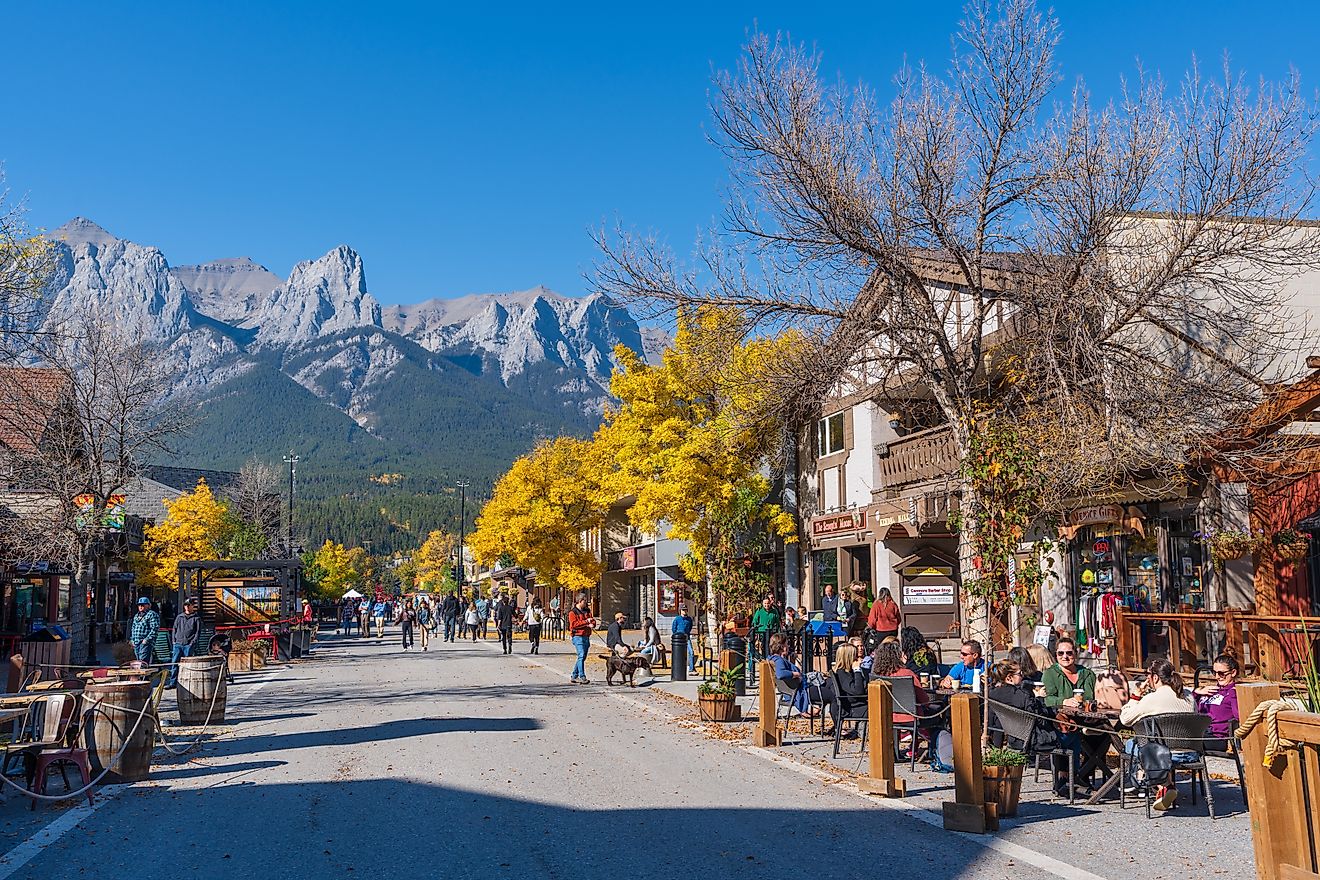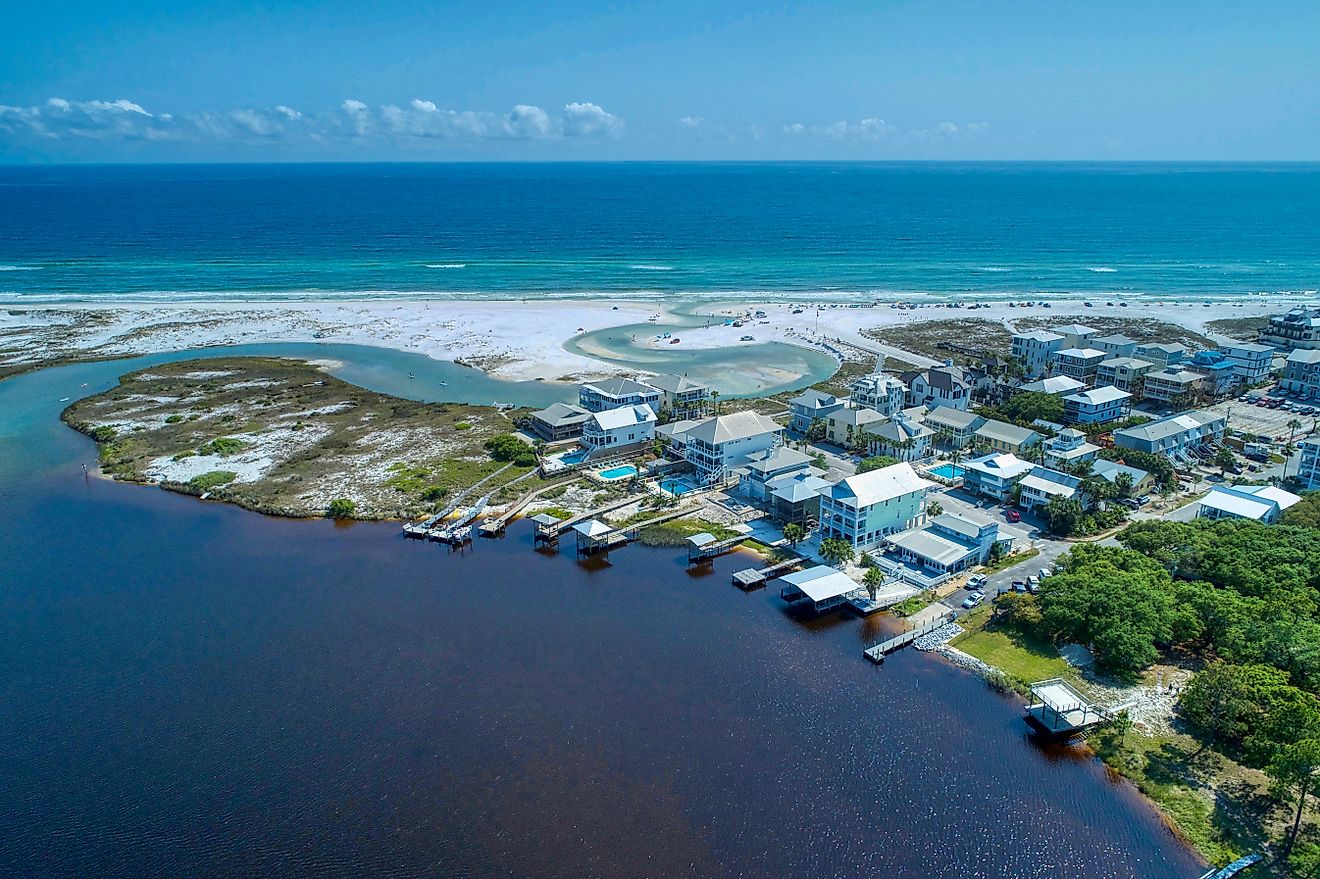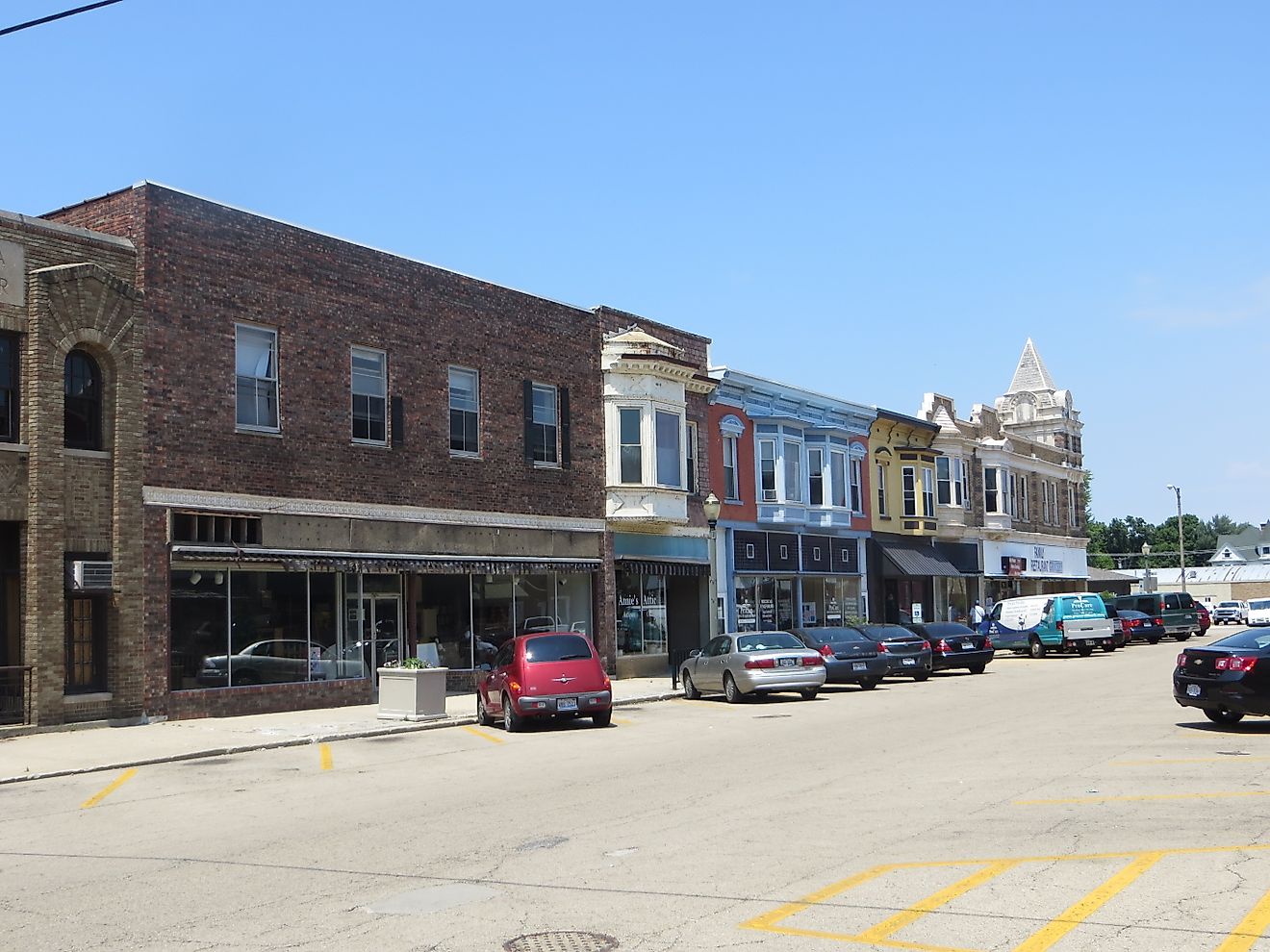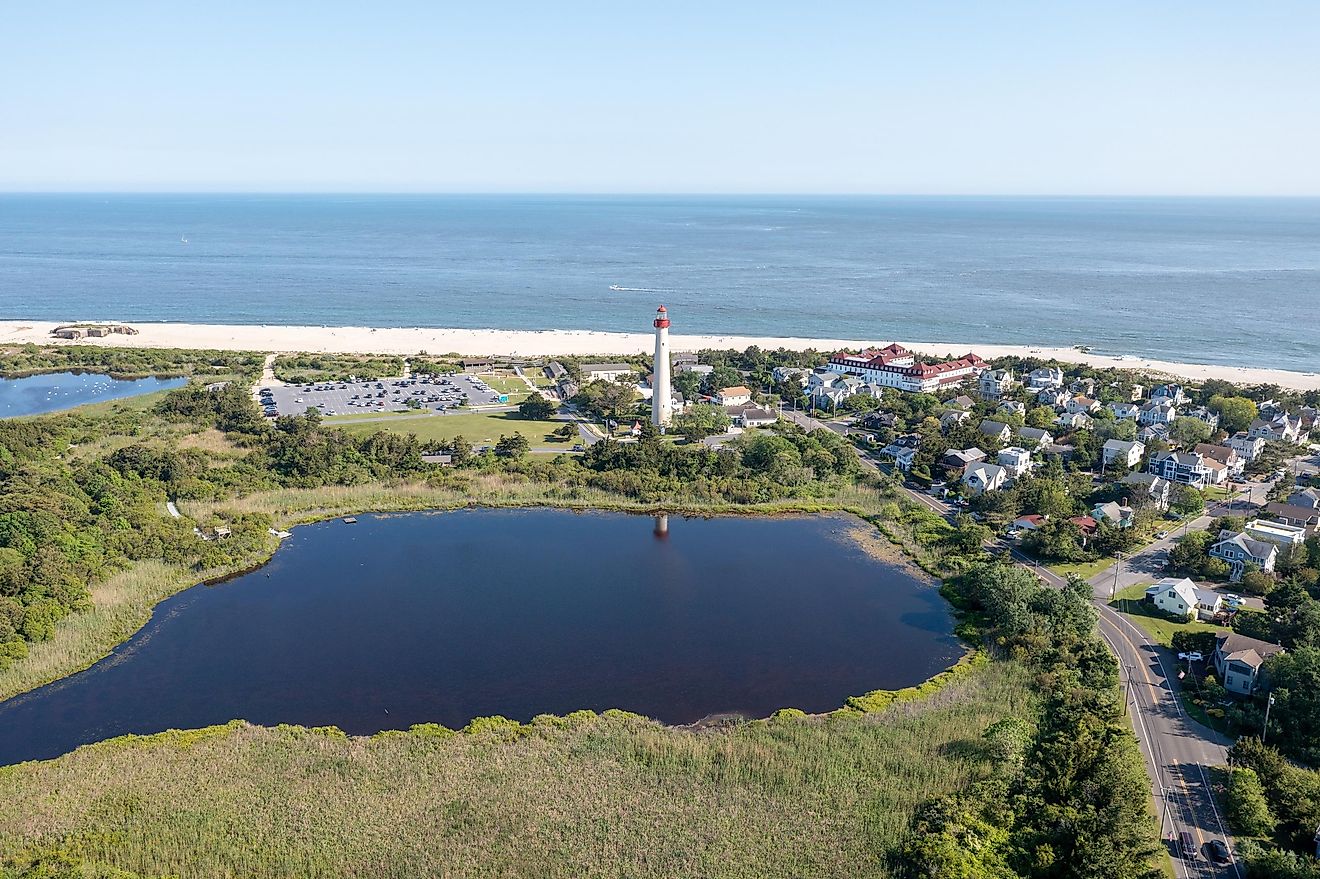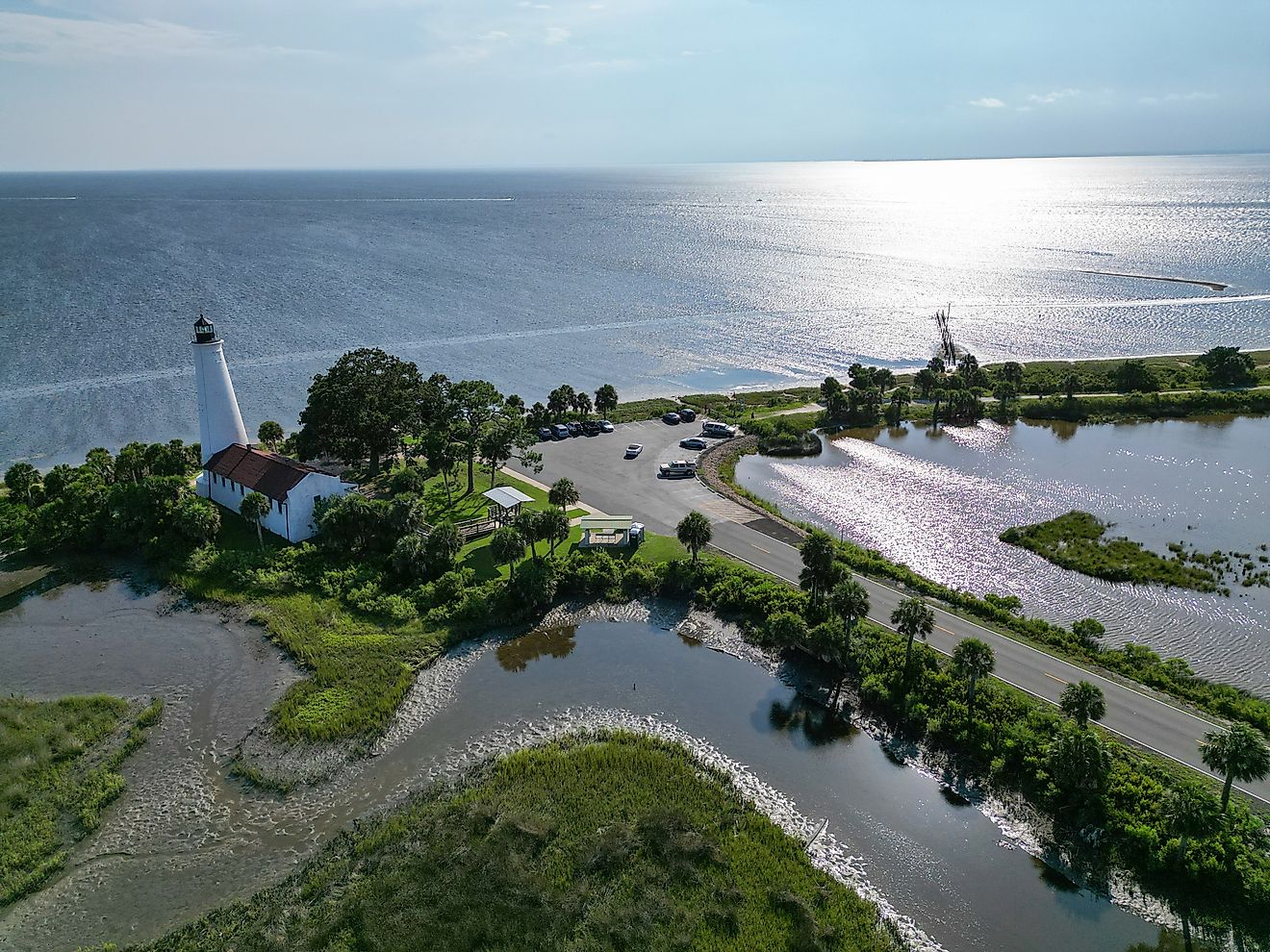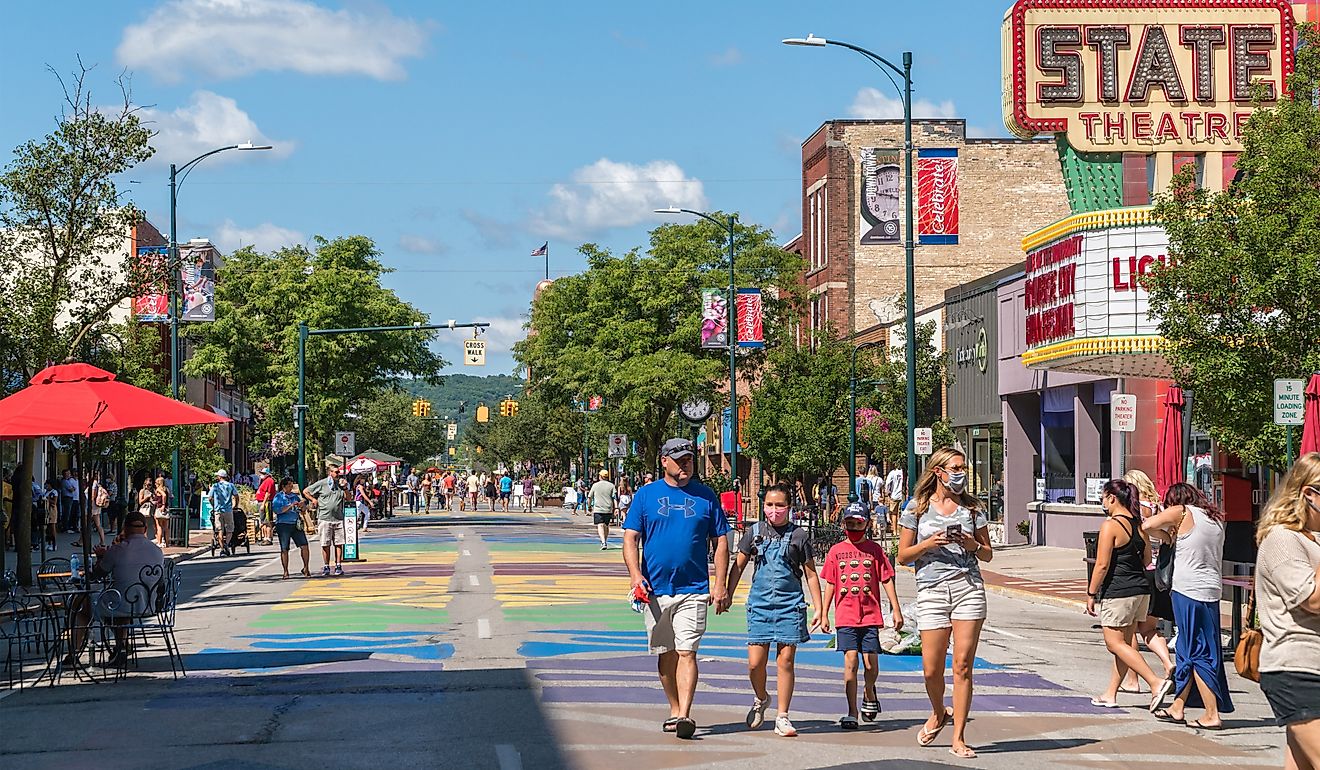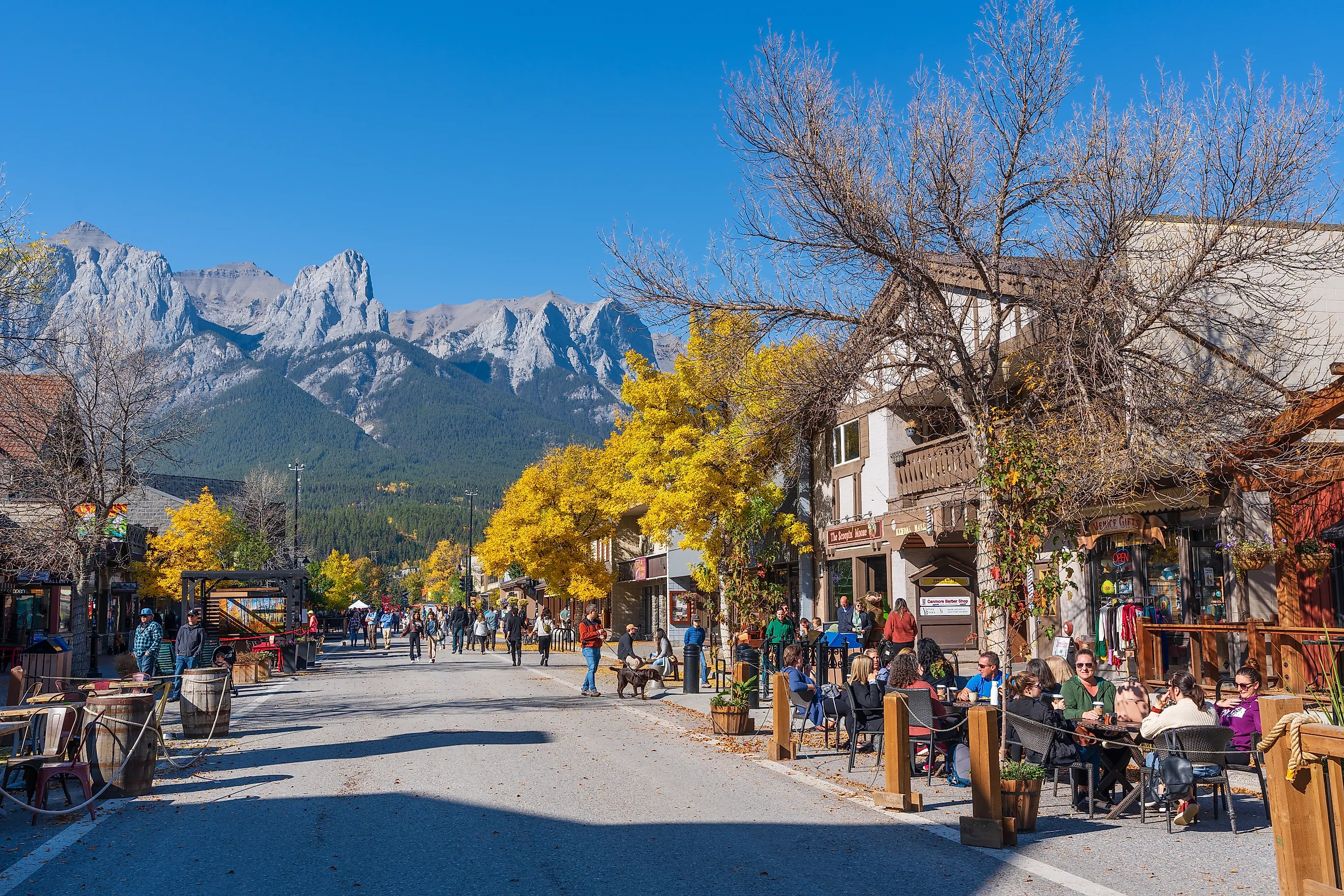
11 Of The Most Adorable Small Towns In The Prairies
They say a dog could run for three days across the Prairies before finding a fence. While the line earns a laugh, Canada’s prairie provinces offer far more than wheat fields. The vast region stretches from Manitoba's freshwater lakes to Alberta's Rocky Mountains, filled with history, beauty, and small-town charm.
If you think there’s little to see in the Prairies, these 11 towns will change your mind.
Canmore, AB
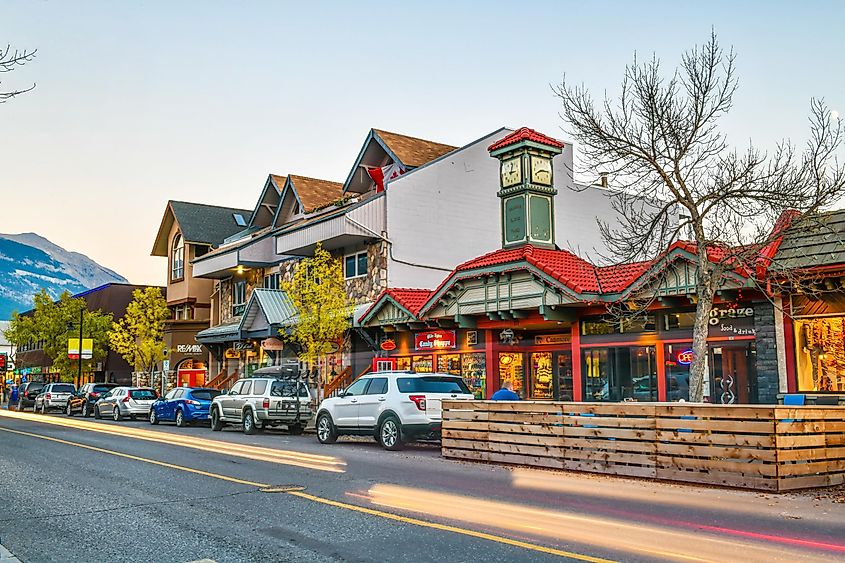
Canmore rests in the Bow River Valley beneath the Canadian Rockies. The local façades range from Alpine old-world charm to log cabin coziness with a twist of the Old West for good measure. Winters bring dog sledding, skating on frozen lakes, and skiing through the valley. In summer, hikers, paddlers, and explorers find trails, rivers, and caves to enjoy.
The artsPlace HUB Gallery displays a compelling mix of exhibitions connecting the Bow Valley’s beauty with the creativity of local artists. The collections strive to represent Community Exhibits, Exhibits by Emerging Artists, and Educational Exhibits, allowing artists to submit their work for consideration each year.
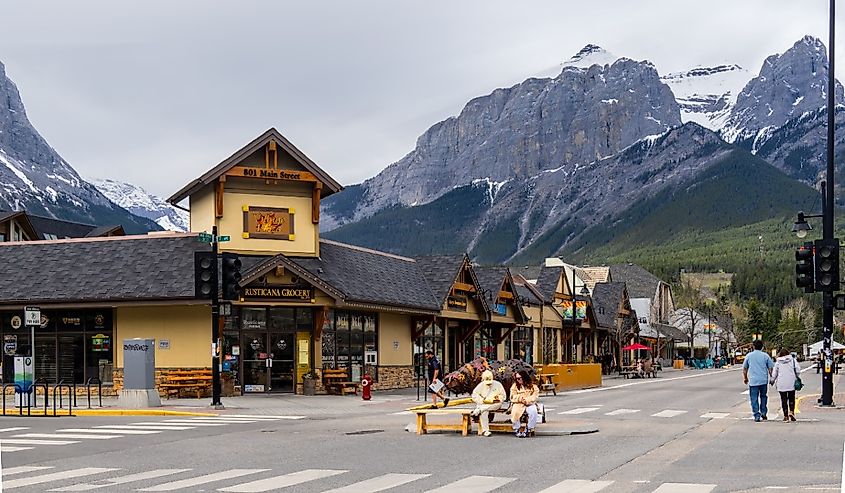
Bodhi Canmore is a restorative boutique spa where guests receive therapy in a tranquil space surrounded by nature. Rejuvenating treatments promote physical and mental health, and guests are welcome to immerse themselves in the full spa experience, enjoying the outdoor hot pools, eucalyptus steam room, and fitness room following their appointment.
Canmore’s food scene is hopping, including the contemporary Canadian cuisine at änkôr. The welcoming ambience is sophisticated in a non-threatening way, enticing epicurious guests to relax and enjoy the moment. Chef Danny Beaulieu’s passion for exceptional dining is shared with his Sommelier, Julie Hélier. They combine innovative flavours and insightful pairings for an indulgent gastronomic experience, ranking änkôr 23rd on Canada’s 100 Best list for 2025.
Wolseley, SK
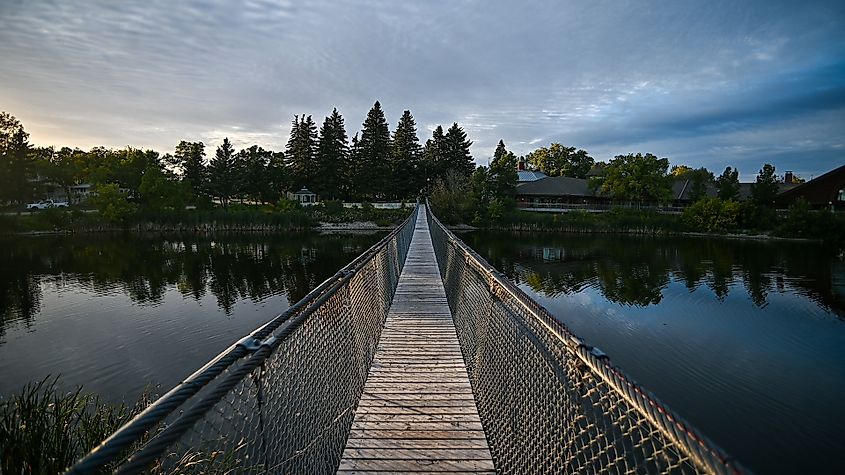
Wolseley is about an hour east of Regina along the TransCanada Highway. Known as the "Town Around a Lake," Wolseley’s historic buildings line Fairy Lake’s edge. A swinging bridge and cheerful fountain at the lake’s centre create an endearing focal point for the town’s historic charm.
The historic bell and hose towers of Wolseley Town Hall & Opera House are town landmarks overlooking the lake. The hall is also the oldest surviving courthouse in Saskatchewan.
The browsable Wolseley Gallery is an eclectic spot where visitors discover the work of local artists, artisans, authors, and photographers. The volunteer-run gallery offers local creative works for sale to support local artists. Compelling skills cover diverse mediums from paintings to photos and woodworking to pottery.
Continue your exploration of local arts at the open-air gallery known as Back Alley Arctic. Large murals by Kal Barteski include polar bears, walruses, puffins, and beluga whales appearing on garage doors, walls, curbs, and coming out of fence tops.
Snag a table at Bonnie Day. The elevated comfort food, exceptional wine list, and crafted cocktails are all about lingering meals with your favourite people.
Steinbach, MB

Steinbach, in Manitoba’s Eastman region, sits 48 km southeast of Winnipeg. Downtown gardens, floral beds, and the Millennium Clock tower give it a cared-for look.
The Mennonite Heritage Village offers a glimpse at the Russian Mennonites who came to Manitoba in the 1870s. The village immerses visitors in village life, from butter churning to shaping metal in the blacksmith shop. Explore over 30 buildings, including the windmill, to experience one of the most influential cultures in the area.
Vintage lovers enjoy Retro Chic, discovering pure nostalgia on every shelf. Follow the heavenly aromas of fresh baking to the town’s Old Church Bakery. Serious bakers carry on the tradition of bread and pastry making along with innovative twists, including mouthwatering cruffins.
Public Brewhouse and Gallery is one of those blink-and-you'll-miss-it spots with such a low-key storefront that it is best to look for the side patio instead. Steinbech’s first microbrewery designs and brews craft beer on-site and serves up beer flights in a taproom featuring rotating local art exhibits.
Drumheller, AB
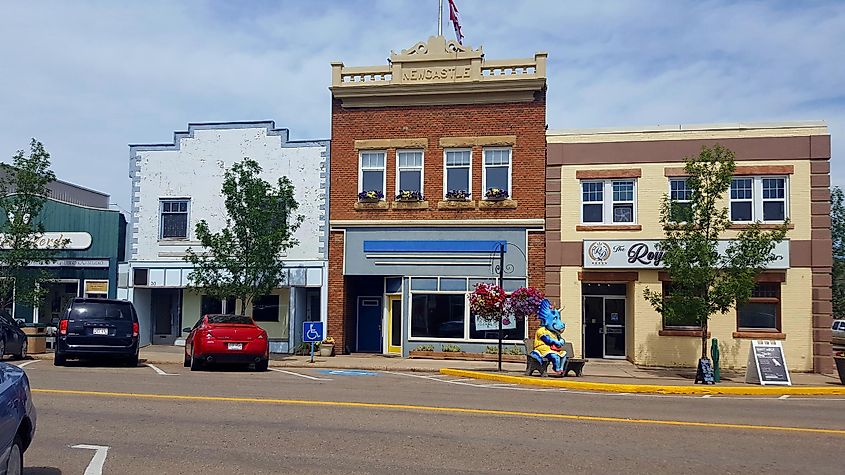
Drumheller is located in Alberta’s Badlands on the Red Deer River, about 110 kilometres from Calgary. "Adorable" does not begin to describe the delightful nature of the town known as the "Dinosaur Capital of the World."
The playfulness of the town begins with the Dino Walk, touring a collection of over 30 dinosaur statues throughout the valley. At least, snap a selfie sitting beside little Effie, who patiently sits on a bench waiting for her beau.

The Badlands’ rugged landscape offers views found nowhere else on earth. With too many paths to choose from, the simplest option is a 1.4 km loop through Midland Provincial Park. The Willow Creek hoodoos are an unusual natural wonder just east of Drumheller.
The Rosebud Theatre is a charming, white clapboard building with picturesque awnings, an unexpected gem in the rugged Badlands. The renowned theatre is known for its live performances produced by students at the historic School of Arts. Dinner at Chef Mo’s in-house buffet is part of the tradition, known for its Slow Roasted Beef carving station.
Prince Albert, SK
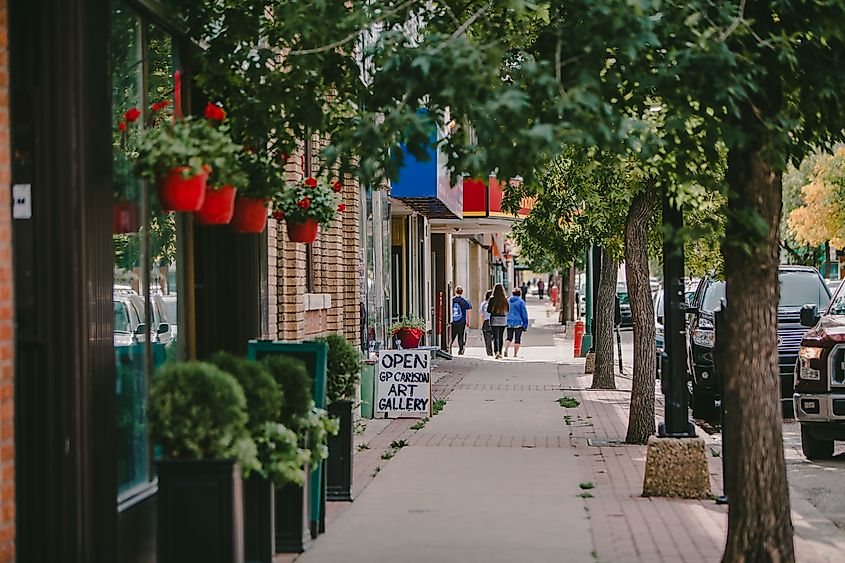
Prince Albert sits on the North Saskatchewan River where the southern prairies meet the boreal forests, earning it the title of Saskatchewan’s “Gateway to the North.” However, it is the historic buildings and houses that make this town so delightful.
The former Town Hall and Opera House is now the town’s arts and culture hub, the Margo Fournier Arts Centre. Built in 1893, the historic building serves as the John V. Hicks Gallery, where you can explore changing exhibits displaying the work of local, regional, and provincial artists. The pretty peachy-pink brick façade, circular window accents, and wrought iron detailing are just one example of Prince Albert’s delightful character.
Public art uses visual expression to share the town’s diverse history. The self-guided tour covers 10 art installations, including sculptures, colourful murals, and playful installations that capture the town’s whimsical side.
The John and Olive Diefenbaker Museum is a quaint two-story cottage-style home right out of a storybook. The house of the former Prime Minister was donated to the town in 1977, and it is furnished with items collected from Diefenbaker’s home.
Discover over 500 hectares at Little Red River Park along 30 km of multi-purpose trails for summer and fall hiking and cycling, and magical winter cross-country skiing and snowshoeing. After a day of adventure, snuggle in for a hot meal or drinks at the park’s Knotty Pine Bistro, taking in the tranquil scenery.
Dauphin, MB
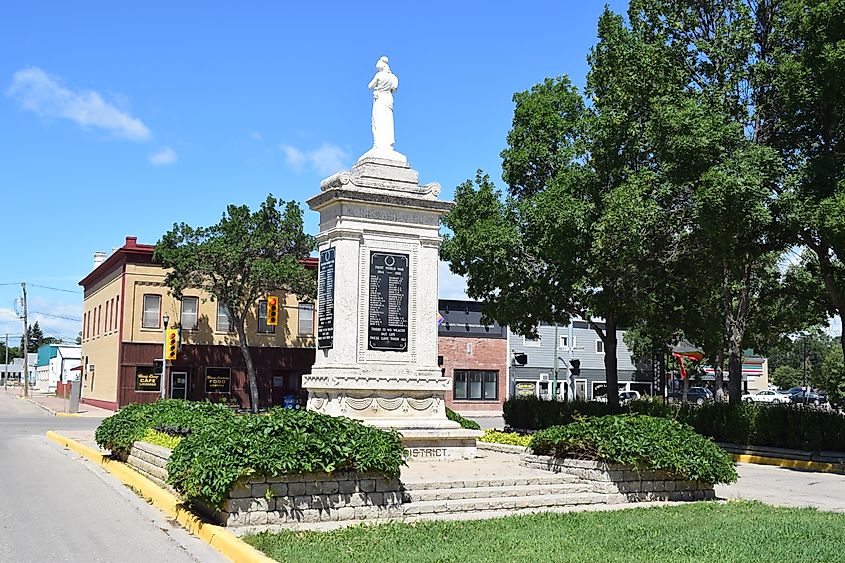
Dauphin sits on Manitoba’s Vermilion River, west of Dauphin Lake. There is no doubt its natural surroundings offer an idyllic backdrop for the town’s character-filled streets, where a central war memorial speaks to the community’s Canadian pride.
The bronze Statues of Dauphin carry on the town’s origin story in vivid detail, including a small girl watching her mother in front of a bread oven. The statue marks the 50th year of Canada’s National Ukrainian Festival, and there are now seven statues found throughout Dauphin. The statues include two children reading outside the library and Berry, a little bronze bear at Vermillion Park.
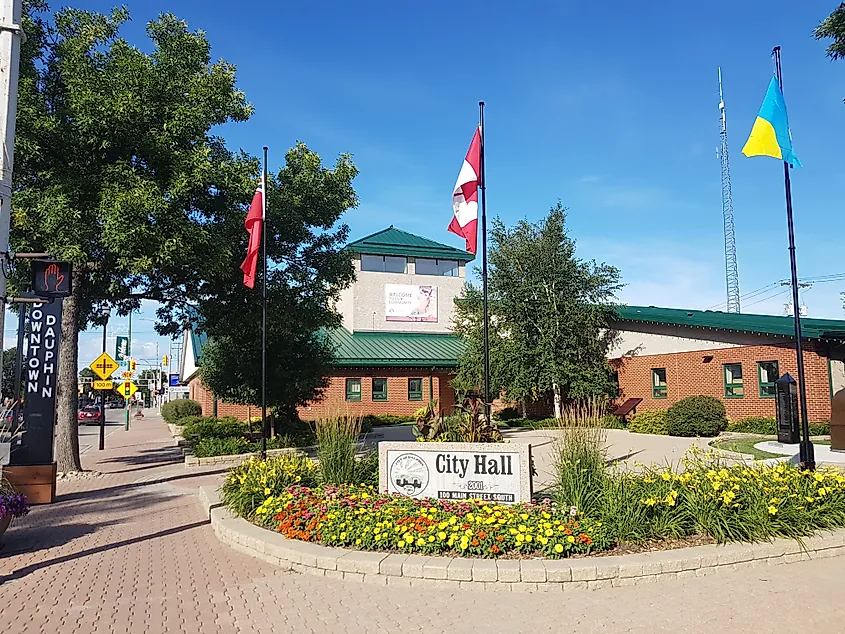
History plays a major role in the town, where visitors discover life as a pioneer at the Dauphin Museum. The immersive attraction includes a one-room schoolhouse and events such as pancake breakfasts, Victorian Teas, and pioneer Christmas events. That is not the only heritage experience in Dauphin. Selo Ukraina is an interactive Ukrainian Village open in the summer. The village recreates a prairie settlement from 1896 to 1925, complete with authentic pioneer homes. Visit farm buildings, the school, and the general store, or attend a lively Ukrainian festival.
The Watson Arts Centre is located in the former city hall, built in 1905. The town's thriving art community hosts live music events and showcases visual works across a diverse collection of arts and mediums.
Okotoks, AB
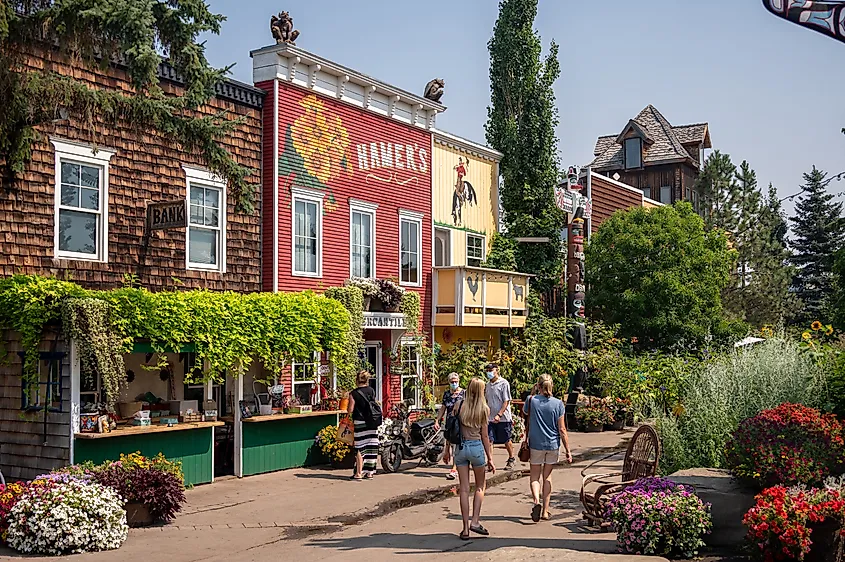
Okotoks is located about 38 km south of downtown Calgary. It sits on the Sheep River in the foothills of the Rockies, where the lovely old-time plaza’s clock and pretty little gardens welcome visitors to slow down and sit a while.
For generations, Calgarians have visited The Saskatoon Farm to experience simpler things in life in the expansive countryside. Cobblestone paths and shady trees create a village feel at the farm, where visitors indulge in the bounty of the season at the farm's restaurant, bakery, garden centre, and market.
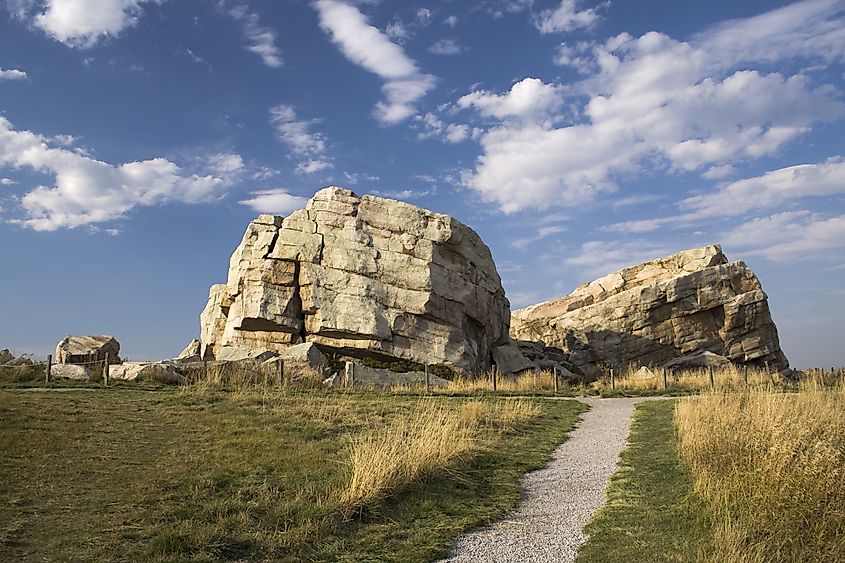
Okotoks’ name is derived from the Indigenous Blackfoot Peoples’ word ‘óóhkotok’ or ‘okatok’ after the rock landmark found along their traditional trails. Known as Big Rock, the glacial erratic has stood out against the flatness of the prairies since it was displaced by a rockslide tens of thousands of years ago. It is now a protected Provincial Historic Resource.
Bar U Ranch National Historic Site explores life on an Alberta ranch in the late 1800s. Visitors can view the historic buildings set against the breathtaking mountains via an authentic horse-pulled wagon and test their roping skills using a replica steer. Experience the town at night, gathered around a crackling campfire, listening to cowboy tales.
Treat yourself to old-fashioned Okotoks hospitality at Heartland Cafe & Restaurant. The restored 1902 Baptist church offers a cozy dining room overlooking the old-time plaza and palate-pleasing signature dishes paired with innovative cocktails, fine wine, and craft beer.
Gimli, MB
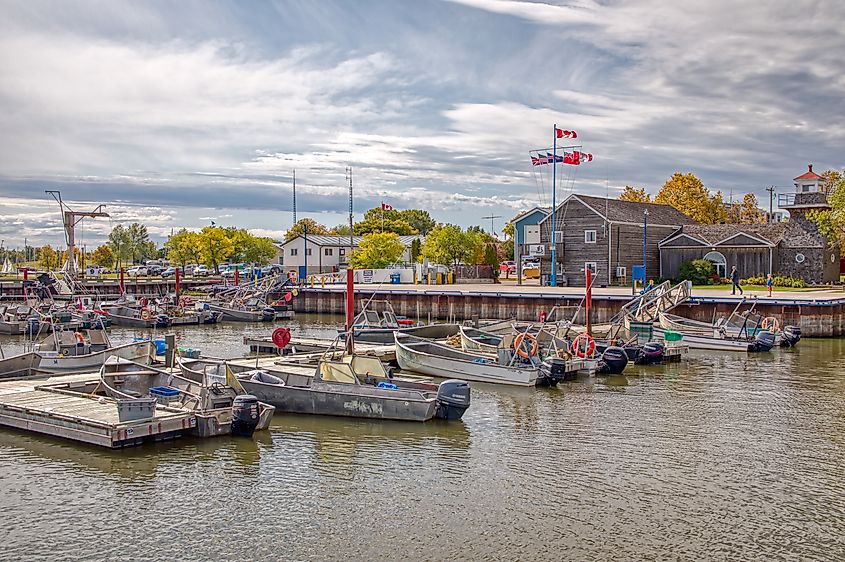
In Norse mythology, Gimli is known as the most beautiful place on earth and the final destination for the “worthy.” Manitoba’s Gimli lives up to its name with its idyllic location on the west shore of Lake Winnipeg. The town is at its best in winter when the lake is dotted with whimsical ice fishing shacks.
The Heart of New Iceland welcomes visitors to its annual Gimli Ice Festival in early March. The event leans heavily into Norse Viking heritage, when the Hands of Lugh create a living history event like no other. Educational interpreters in full costume portray aspects of Viking life both in combat and during peaceful village life. Participate in a lively frozen fish toss or cook Bannock over an open fire.
Gimli is home to the largest concentration of Icelandic ancestry people, making it the ideal spot to discover Islendingadagurinn. The Icelandic Festival of Manitoba features live music, sandcastle competitions, unique Icelandic traditions, and a variety of Icelandic cuisine.
Year-round selfie ops at Viking Park feature the town’s iconic 4.6-meter Viking statue. H.P. Tergesen & Sons is a Gimli landmark established in 1899. The general store has remained in the Tergesen family for generations, making it a must-visit destination for Gimli souvenirs.
Portage la Prairie, MB
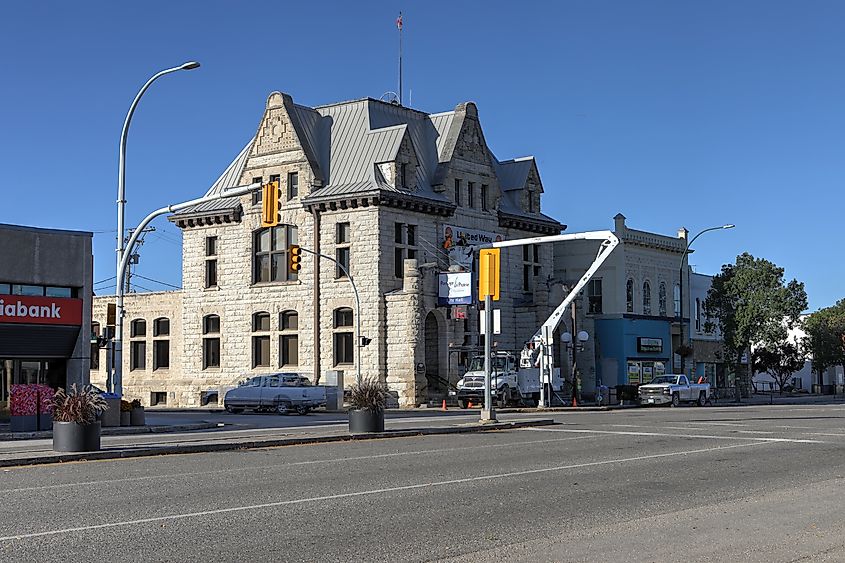
Portage la Prairie is located about 70 km west of Winnipeg on the Assiniboine River, where a charming Dutch-style windmill is an unlikely landmark greeting visitors to the southern shores of Crescent Lake. The windmill was first erected in the 1950s by the town’s Dutch immigrant community in appreciation for their newfound home after the Second World War. The windmill is just one spot to explore at Island Park.
The park includes a four-acre Arboretum representing the Prairie's diverse forests. A trail weaves its way through the scenic landscape with information stands identifying the ecosystems where over 200 species of plant life thrive.
Immerse yourself in Portage la Prairie history at Fort la Reine Museum, where the heritage of the town and the Canadian prairies comes to life at the 5-acre historic site. Explore thousands of artifacts in 15 buildings reflecting the homes, schools, and businesses of early settlers.
Heritage Square is Portage la Prairie’s historic downtown area, where you will discover eateries, galleries, and entertainment venues. The dynamic concerts and performances at Prairie Fusion Arts and Entertainment are just one feature of the multifaceted arts centre. Three galleries share the space, featuring the original work of local, national, and international artists.
Portage la Prairie embraces Manitoba’s notoriously cold winters on the frozen expanse of Lake Crescent. The snow-covered trees along the shoreline create a serene setting for the pristine skating trail, where warming huts and fire pits welcome chilly skaters to snuggle up.
Fort Macleod, AB
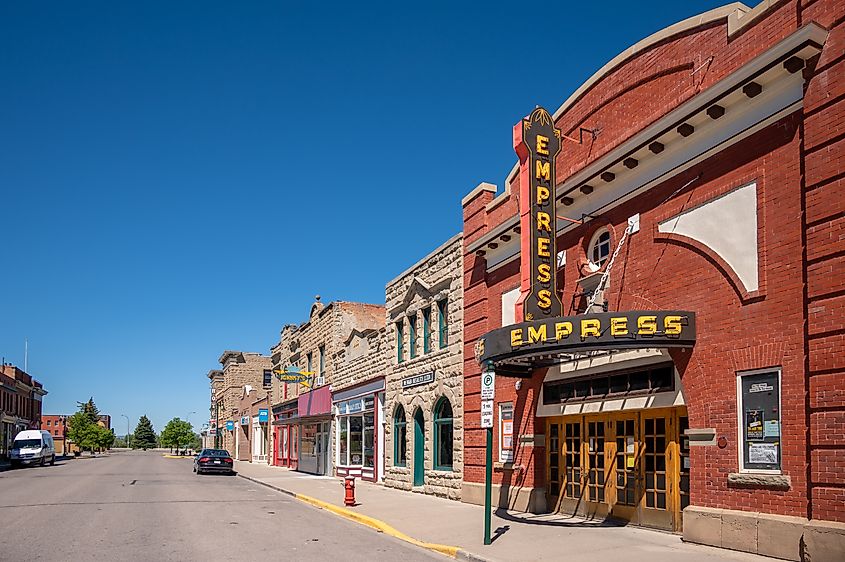
Fort Macleod was originally a North-West Mounted Police (NWMP) barracks built in 1874. Although the original Main Street wood buildings burned down in a fire in 1906, the mix of rebuilt stone and red brick buildings provides a charming sight along Southern Alberta’s Calgary to Lethbridge route.
The town served as the movie set for several films, including Brokeback Mountain, Interstellar, Ghostbusters: Afterlife, and Let Him Go, making it an interesting destination for movie fans.
History buffs also have much to discover at The Fort Museum of the North-West Mounted Police and First Nations Interpretive Centre, where the shared heritage of the Mounted Police, Indigenous People, and settlers offers a diverse historical experience. The iconic Musical Ride performance is a major summer attraction recreating the “Cavalry Drill” on horseback by riders in historic mounted police uniforms.
The nearby Head-Smashed-In Buffalo Jump Interpretive Centre preserves over 6,000 years of Plains Buffalo culture, where visitors learn about the vast landscape and the cultural significance of the imposing cliffs. The view from the cliffs stretches from the plains to the Rockies, offering a perspective on the land’s Indigenous history.
Buffalo Jump Trail is one of the many road biking routes that attract avid cyclists to the area. Cyclists can take the trail in the early morning to reach the Interpretive Centre just as the sun rises. The view is all the more inspiring when the sun casts a warm glow on the Rockies.
Waterton, AB
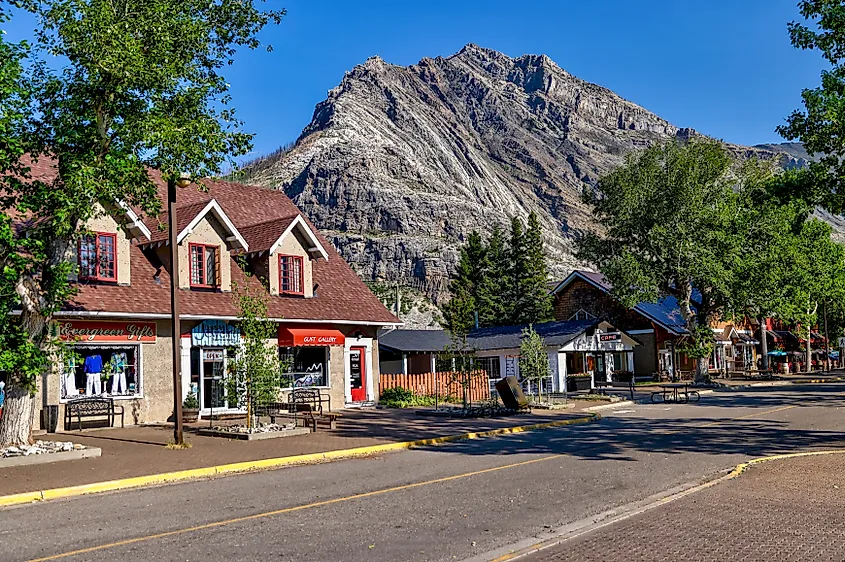
A narrow region of the Rockies surrounds the Alpine village of Waterton with rugged mountains set against a peaceful lake. Also known as Waterton Park, the enchanting hamlet is a mountain retreat known as the Wildflower Capital of Canada.
Waterton Lakes National Park offers four-season beauty. In spring, wildflowers carpet the hills and fill the air with scent. Snowmelt at Cameron Falls creates a powerful cascade into the basin below. In the fall, wildlife viewing at the park includes black bears, elk, and deer foraging for food in the lower mountainsides. When conditions allow, skiers and snowshoers can explore Waterton’s snow-covered trails to catch glimpses of Bighorn sheep or elk.
Waterton Lakes is also a designated dark sky park where pristine conditions reveal the craters of the moon and constellations. It is difficult not to feel humbled by the Earth’s position in the expanse of the Milky Way.
Visit the iconic Prince of Wales Hotel, an Alpine lodge overlooking a tranquil lake. The historic hotel’s rustic-chic wood detailing and stunning views from floor-to-ceiling windows have been welcoming guests since 1927. Treat yourself to fine dining in the elegant Royal Stewart Dining Room, or take in the views sipping stylish cocktails at the Windsor or Lobby Lounge.
The Enduring Charm of the Prairies
From Manitoba’s lakeside communities to Alberta’s mountain valleys, the Prairies share a story built on resilience and connection. Each town reflects the region’s layered past, from Indigenous Peoples and early settlers to artists, farmers, and ranchers who shaped the land. These small towns continue to embody the warmth and creativity of Prairie life, where history and nature meet in simple, genuine ways. Whether you’re travelling across provinces or exploring close to home, the Prairies offer timeless charm and endless reasons to return.

